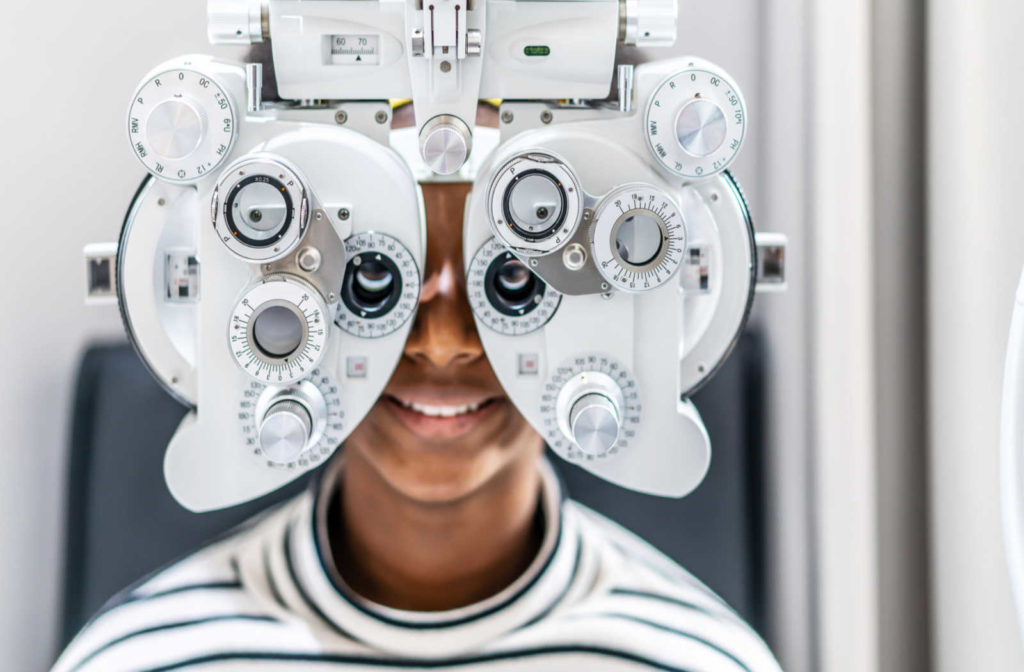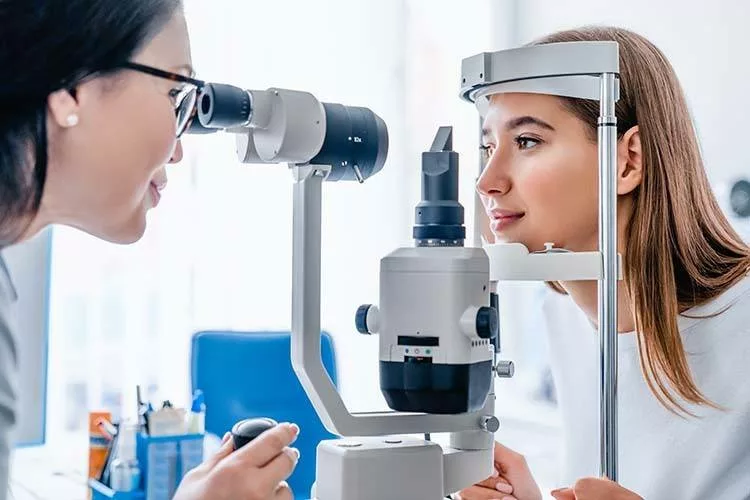Experience Personalized Care with Opticore Optometry in Chino
Experience Personalized Care with Opticore Optometry in Chino
Blog Article
Discovering the Latest Technical Developments in Optometry and What They Mean for Eye Doctors
In the ever-evolving area of optometry, recent technological developments are improving how experts approach eye care. From the precision of Optical Coherence Tomography to the nuanced insights provided by AI-driven analysis devices, these technologies are establishing brand-new standards in individual assessment and treatment. Teleoptometry is poised to redefine accessibility, making sure that expertise transcends geographical constraints. As these advancements penetrate the method, optometrists are encountered with the challenge of welcoming these tools to improve person outcomes. Yet, the concern stays: just how will these technological changes redefine the functions and duties within the profession?
Advancements in Diagnostic Devices
Progressing the field of optometry, advancements in analysis tools have changed the way eye care specialists evaluate and identify ocular problems and visual impairments. The past decade has actually observed significant technical advancements, allowing even more exact and detailed assessments.
An additional key technology is the intro of advanced corneal topography systems, which map the surface curvature of the cornea with precision. These devices are especially beneficial for fitting contact lenses and diagnosing corneal problems. Digital retinal imaging has actually changed standard ophthalmoscopy, providing in-depth, breathtaking views of the retina that facilitate extensive aesthetic examinations.
The development of wavefront aberrometry has additionally been vital, enabling the analysis of refractive errors with unequaled precision (Optometrist Chino). This innovation aids in tailoring restorative lenses and enhancing medical end results for refractive surgical treatments. Collectively, these diagnostic advancements equip eye doctors to deliver exceptional client care, ensuring very early intervention and tailored therapy methods, ultimately boosting aesthetic health results
AI in Person Administration
Structure on the structure of sophisticated diagnostic devices, the unification of man-made intelligence (AI) in client administration stands for a transformative jump for optometry. AI systems are significantly employed to enhance efficiency, precision, and customization in individual care.
In addition, AI-driven systems promote structured person interactions and administrative processes. Automated organizing, online appointments, and personalized follow-up strategies not only enhance client complete satisfaction but likewise enhance time administration for experts. These systems can triage clients based on the necessity of their conditions, ensuring that those in essential requirement receive timely attention.
Additionally, AI improves decision-making by supplying eye doctors with evidence-based referrals and treatment paths. By integrating information from electronic wellness documents, AI tools supply understandings that notify professional choices, reducing the threat of errors and improving patient end results. As AI proceeds to develop, its role in patient monitoring will likely broaden, reshaping the landscape of optometric care.
Advances in Retinal Imaging
In the world of optometry, retinal imaging has witnessed impressive technological improvements that are enhancing diagnostic abilities and person treatment. Advancements such as Optical Comprehensibility Tomography (OCT) and fundus photography have transformed just how optometrists evaluate the retina and picture. OCT, specifically, gives high-resolution, cross-sectional pictures of the retina, enabling the in-depth evaluation of its layers. This capability is vital for early discovery and monitoring of conditions like glaucoma, diabetic retinopathy, and age-related macular deterioration.
Improved imaging techniques like OCT angiography are further refining diagnostic precision. This non-invasive method maps blood flow in the retina, offering critical insights into vascular wellness without the demand for dye injections. In addition, flexible optics modern technology is being integrated right into retinal imaging systems to fix ocular aberrations, delivering extraordinary photo quality. a knockout post Such improvements assist in the recognition of min retinal changes that can indicate illness progression.
Moreover, advancements in man-made intelligence are augmenting retinal imaging by enabling automated analysis of huge datasets. These systems aid eye doctors in determining patterns a sign of pathology, thereby improving analysis accuracy and effectiveness. Collectively, these innovations are changing retinal imaging into a foundation of modern-day eye treatment, enhancing end results and expanding healing possibilities.
Teleoptometry's Expanding Function
Teleoptometry is progressively coming to be an essential element of eye treatment, driven by innovations in data and analysis devices. As optometry accepts digital change, teleoptometry promotes remote consultations, enabling optometrists to prolong their services past standard boundaries. This is particularly helpful in country and underserved areas where access to specialized eye treatment is commonly minimal. By leveraging high-resolution video clip conferencing and advanced retinal imaging, optometrists can conduct comprehensive eye examinations from afar, making sure prompt diagnosis and treatment.
The integration of expert system (AI) more enhances teleoptometry, making it possible for the analysis of visual information and aiding in the discovery of eye learn this here now problems such as glaucoma and diabetic person retinopathy. AI-powered formulas can swiftly analyze complex imaging data, offering optometrists with valuable understandings that bolster professional decision-making.
Moreover, teleoptometry supports continuity of care through smooth integration with digital health and wellness records (EHRs), enabling eye doctors to keep thorough client histories. When seeking advice from with different practitioners., this guarantees that patients obtain tailored and consistent care also.
In spite of these advantages, difficulties remain, consisting of making sure data security and managing person expectations. Teleoptometry stands for a significant stride in the direction of even more available, reliable, and patient-centered eye care. As technology evolves, its function is poised to broaden better.

Future Trends in Eye Care
A myriad of innovative trends is readied to improve the future of eye treatment, driven by technical advancements and the evolving requirements of clients. One significant trend is the combination of artificial knowledge (AI) in diagnostics, which assures to boost the accuracy and efficiency of eye evaluations. AI formulas can analyze large quantities of information from retinal photos, possibly discovering conditions like diabetic retinopathy and glaucoma earlier than typical methods.
Moreover, customized medicine is getting grip in optometry, with genetic screening notifying customized therapy plans. This method intends to enhance client end results by customizing treatments to specific genetic profiles. Wearable modern technology, such as smart contact lenses, is also coming up, providing real-time monitoring of intraocular pressure or glucose levels, therefore giving continuous insights into ocular and systemic wellness.
The adoption of increased fact (AR) and online truth (VIRTUAL REALITY) in training and patient education is another arising trend. These innovations provide immersive experiences that can enhance understanding and skills both for optometrists and patients. As these click resources patterns progress, eye doctors must stay abreast of technical developments to give advanced care, guaranteeing improved patient outcomes and contentment in the dynamic landscape of eye care.
Final Thought

Collectively, these analysis developments equip eye doctors to deliver exceptional client care, ensuring very early treatment and customized therapy strategies, ultimately enhancing aesthetic wellness results.

As these innovations continue to develop, optometrists must adapt and integrate them into technique, inevitably enhancing operations effectiveness and raising the standard of eye treatment supplied to patients.
Report this page